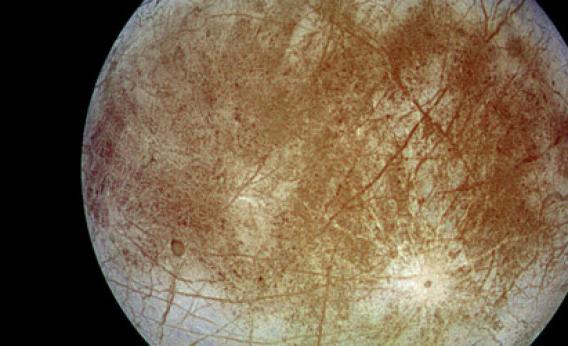Create a free profile to get unlimited access to exclusive videos, sweepstakes, and more!
... Attempt No Landings There

I love science-based fictionâas opposed to just science fiction, I mean fiction with real science, or at least based on solid science. So I got excited when I heard about the movie Europa Report, about a crewed mission to a moon of Jupiter.
Here's a short teaser for the movie that surfaced recently on YouTube:
Cooooool. The dedication to realism is laudable. That really looks like the surface of Europa. There's a website for the movie, too, put together like an actual space mission site. Right now there's not much info on it; no doubt they're trying to keep things a bit mysterious for the moment.
But this movie's premise does appear to be based on solid science. Or actually, liquid science. We've known for a long time that Europa is covered in ice, and the surface features hint very strongly that there is a vast ocean underneath, perhaps with twice the volume of all the oceans on Earth! We know water makes it easier for life as we know it to form and evolve, so Europa is a big target for scientists (astrobiologists) looking for life in space. This idea hit the mainstream when it was featured in the book (and later, the movie) 2010: Odyssey Two by Arthur C. Clarke.
This picture of Europa, taken by the Galileo spacecraft in the late 1990s, shows several clues to Europa's wet interior. For one thing, there are essentially no impact craters. That's astonishing all by itself! Almost every airless object in the solar system is covered in craters from asteroid and comet impacts (thick atmospheres can help prevent crater formation, but on airless worlds, even the tiniest pebble hits the surface). Europa's lack of blemishes means its surface must be young; any older impact sites have been erased. That in turn means the surface is dynamic, changing, moving, which is consistent with ice floating on an ocean.
So how do you get liquid water so far out from the sun, where temperatures are so frigid? The answer is gravity. Europa is about the size of our own moon, but Jupiter has three other big satellitesâone, Ganymede, is bigger than the planet Mercury! As they all orbit the giant planet they pass one another, and their gravity stretches and tugs on the other moons, flexing them. In the case of Europa, friction inside the moon heats the interior up as it flexes, and the amount of heating is enough to melt water ice into a liquid.
That explains the long cracks you can see in the picture as well. Imagine vast sheets of ice covering the entire surface, floating on that ocean. Stress would cause them to fracture, with repeated flexing expanding those cracks until they're hundreds of kilometers long.
All of this is why Europa makes such a juicy target for astrobiology. And, no doubt, why it makes such a great destination for a crewed mission that can mysteriously lose transmission just as things get interesting! I'm really looking forward to Europa Report, which is due out in 2013. The people making the movie consulted with a couple of NASA scientists on it, which makes me very happy. I'm a big advocate for partnerships between writers and scientists; I've done this myself, and I think it tends to make for better story telling.
Judging from the trailer, this may be quite a story to tell. We'll find out next year.


























